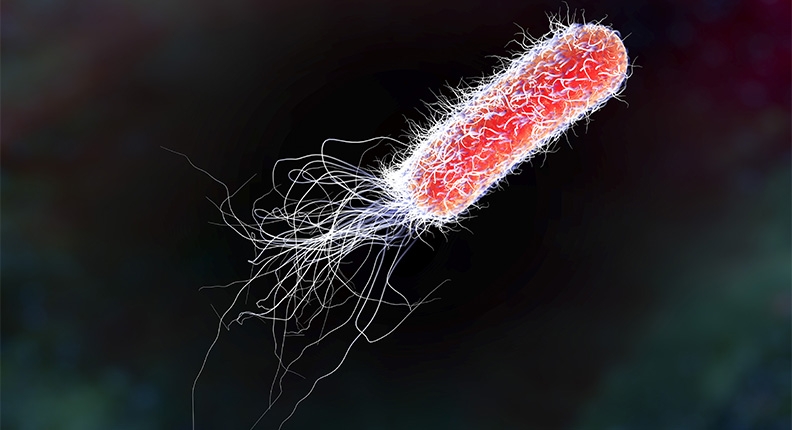A new dual therapy approach to fight multi-drug resistant gram-negative bacteria has been uncovered – and, interestingly, it involves an existing antifungal and antiprotozoal drug.
Dr. Eric Brown, professor of biochemistry at McMaster University, and his team showed that pentamidine, a drug normally used to treat protozoan and fungal infections, is effective against drug-resistant gram-negative bacteria when used alongside other antibiotics.
The paper was published on the 6th March 2017, in Nature Microbiology.
Gram-negative bacteria have become a significant danger to public health, with several strains now showing resistance to multiple antibiotics such as colistin, a ‘last-resort’ drug. What gives gram-negative bacteria their name is the double membrane encasing them, which stops them from taking in the crystal violet dye used to identify gram-negative and gram-positive bacteria.
Polymixins are used to treat infections caused by gram-negative bacteria, but with the increase in resistance towards this type of antibiotic scientists have been trying to come up with new ways to fight this pathogen. Antibiotics normally used to treat gram-positive bacteria would in theory be useful… the only problem is the double membrane layer. This acts as a ‘shell’, protecting the bacteria from these antibiotics from gaining entry.

So what if we could crack this shell, to help these drugs get in?
To answer this question, the research team screened a collection of 1,440 drugs against Escherichia coli to see if any were able to affect this protective barrier. They found that pentamidine was able to disrupt the surface of the outer membrane, opening the door for other antibiotics to enter and exert their effect.
They then tested how pentamidine affected a range of gram-negative bacteria when it was used in conjunction with antibiotics often reserved for gram-positive organisms such as rifampicin, and found that the combination of petamidine and antibiotic tended to be particularly effective. Impressively, this was even true against Acinobacter baumannii and the Enterobacteriacaea, which the WHO rated as a ‘critical priority’ in their list of bacteria against which new antibiotics are urgently needed. Pentamidine’s adjunctive effect even showed promise against Pseudomonas aeruginosa, the third most critical bacteria on the same list, although at a reduced efficacy.
Importantly, pentamidine’s in vitro effect on the efficacy of antibiotics was also shown to apply in vivo when the research team infected mice with A. baumannii and treated them with a combination of pentamidine and novobiocin. This duo was also effective against colistin-resistant A. baumannii, although a higher concentration of novobiocin was needed.
Pentamidine has actually been recognised for its antibacterial activity in the past, but because of potential side effects and the fact that unachievable concentrations are needed to have any real effect in humans, it hasn’t been considered for clinical use as an antibiotic.
However, if it’s used in conjunction with antibiotics, as it was in this study, then doses of pentamidine may not need to be so high, potentially allowing scientists to get around the problem of this drug’s high in vivo concentration requirement.
The paper also mentions how, when strains of E. coli were treated with a combination of pentamidine and rifampicin, the bacteria would only show signs of developing resistance against rifampicin, suggesting that pentamidine could keep up its efficacy without risking the rapid onset of resistance.
Pentamidine shows promise as a successful adjuvant against gram-negative bacteria. The next stage would be to make sure the drug is safe enough to use in humans.
Finding other drugs to treat what pentamidine couldn’t would also be an important step. Dr. Eric Brown explained, “Pentamidine wasn’t effective against all the gram-negatives, so we’re now looking into further compounds that might be useful.” He added, “Innovation is so important and we have to keep discovering so we can stay one step ahead. We’ve had the upper hand for a relatively brief time in course of human history over bacteria and that’s the result of innovation, and we really need to keep doing that.”
